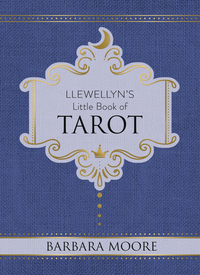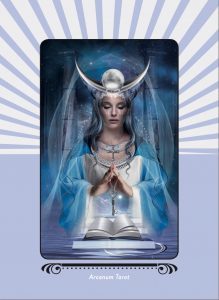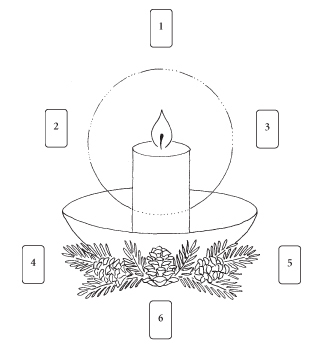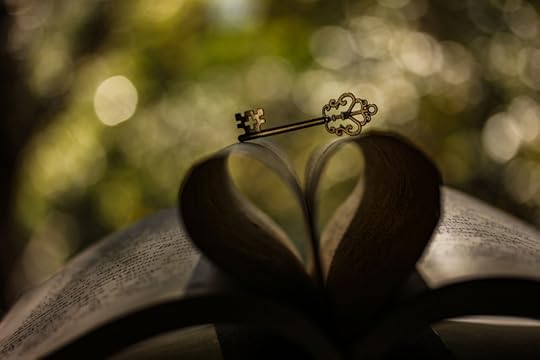Llewellyn Publications's Blog, page 30
June 19, 2019
A Great Introduction to the Marseille Tarot

Reading and Understanding the Marseille Tarot by Anna Maria Morsucci and Antonella Aloi is the first book that actually got me interested in this style of deck. I really love looking at the Majors laid out in the familiar three rows of seven. Morsucci and Aloi cover that but also discuss the less common two rows of ten.
You can read what they have to say below and find out more HERE.
In the Majora Arcana, other than the division by sevens, we can also find another division, composed of two sets of ten, where the Arcana are grouped according to the last letter of their number. Therefore, the High Priestess (II) and the Hanged Man (XII) are connected. Two Arcana are the exception: The World and the Fool. The World dominates all of the Arcana. The Fool, on the contrary, represents the number 0 and is seen as outside of any hierarchy. It is considered separate and complementary to all the other Tarot. The subdivision in ten is present also in the numerical cards of the Minor Arcana, which are 10 for each suit. The Minor Arcana therefore are connected to the Major Arcana in function of their number.
Returning to the Major Arcana, in the first ten, from the Magician to the Wheel of Fortune, we find a series of human or animal figures which can be found in situations and practical activities, all of which are very understandable. The landscape is almost absent and within this the figures and their actions appear dominant. In the second set of ten, from Strength to Judgement, there is scenery and situations where the human figure appears to be inserted into a landscape that gradually becomes richer, with references to the forces of nature and the cosmos becoming more evident. Furthermore, following the sequence of the Arcana, the allegorical and fantasy aspects increase. It is very interesting to place the two Major Arcana sets of ten side by side. Immediately it can be seen that the images of the cards express the same concepts with the opposite meanings.
June 17, 2019
Ireland and the Celtic Tree Calendar
Readers, please enjoy this guest blog post by Sharlyn Hidalgo, author of The Healing Power of Trees and the new Celtic Tree Rituals.
 I just got back from a three-week visit to Ireland on a pilgrimage of sorts to connect with the spirits of the land. We were a small group that traveled with local guides so that we could visit out of the way places strong in spirit.
I just got back from a three-week visit to Ireland on a pilgrimage of sorts to connect with the spirits of the land. We were a small group that traveled with local guides so that we could visit out of the way places strong in spirit.
The greatest reward for traveling there was understanding that Ireland is the birthplace of the ogham, or tree alphabet. It originated in Ireland and then moved east to the rest of the rest of the British Isles. So, in a way it was like going home. I also met quite a few people who are as passionate about the ogham as I am. I was very impressed with their desire to teach and preserve these teachings. I received a lot of encouragement and gratitude from these new Irish friends who shared a reverence for the ogham.
One such woman is passionate about finding and restoring and maintaining the ancient wells known for healing. Her name is Rosaleen Durkin and her website is at rosaleendurkin.com.
One man is carving stone markers for the wells, and creating a tree walk with the ogham. His name is Seighean O Draoi, and he can be reached on Facebook. He and I had a lovely time talking about the trees. He is also involved with a project that is working to digitally record all the known ogham stones in Ireland. The website is: www.countywicklowheritage.org/page/creative_ogham_wicklow_project.
And, another man named John Willmott has a book of stories and poetry called Bathing in the Fae’s Breath. He is known as the Woodland Bard, and can be reached at bardsinthewoods.com.
John owns the Carrowcrory Labyrinth Gardens, where he has restored a thatched cottage. He has created a Native Tree Labyrinth here that he shares with visitors. It was my honor to visit many sites with John, including a reclusive Fairy Glen, a walk at Benbulben Mt, a visit to the Caves of Keash, and a walk in the Hazelwood forest. Being a writer, poet, storyteller, and songwriter, he likes to offer and coordinate time in the woods and forests with others. He loves to help each other with identification of trees, shrubs, flowers, fungi, insects, birds and mammals we see there. He also loves to share poetry and his own works as well.
It was fun to exchange our work. John was thrilled about my new book, Celtic Tree Rituals: Ceremonies for the Thirteen Moon Months and a Day, and he ordered one. And I bought his book. I love this sense of “cross-pollination” among tree lovers!
One thing John shared about the ogham I found interesting: the scribes and monks wrote in Latin the sounds that they heard from the Irish speakers. Thus, we can only guess at the exact sound and nature of the spoken words. Also, we need to remember that so much came through the religious interpretation of the early church (which was trying to eradicate the Pagan teachings). As such, John feels that much of what is known about the ogham must be intuited through the heart, as there are many systems both of ogham writing, and different month designations. He stays with the teachings he learns while sitting with trees, much as I have. And so, it was easy for him to accept one more interpretation with there being no one truth about the origins of the ogham or the tree teachings.
I felt so at home with these people. The other treasure was meeting all the Irish trees that I talk about in my tree books. It was thrilling for me.
I am thinking about how to show respect for the Mother Earth and all her creatures. As we approach summer, I am so happy that I can reach for Celtic Tree RitualsWheel of the Year.
In closing, I bid you a bountiful summer full of family, love, and bright blessings!
Our thanks to Sharlyn Hidalgo for her guest post! For more from Sharlyn, read her article “Tree Ceremonies and Guided Meditations for Working with the Summer Season.”
June 14, 2019
Happy Winter Solstice to Our Southern Hemisphere Friends
Here in the northern hemisphere, the Summer Solstice is almost upon us, but for our southern hemisphere friends, it is time for the winter solstice. To help you celebrate, we’ve rounded up our best rituals, spells, books, and more!
Celebrate the Winter Solstice with this festive golden soup, warmed with fragrant nutmeg and allspice. This velvety soup is elegant and deceptively simple to prepare.
Winter Solstice Wishing Candle:
There is a tradition of making a wish at the Winter Solstice, of burning pieces of paper with wishes or affirmations written on them. Craft these homemade candles infused with your wishes.
Solstice Light Spread for Tarot:
Use the Solstice Light spread to strengthen your hopes for the future. Plan, make wishes, raise your spirits—knowing that the creative fire of spring is promised to you at Yule.
Traveling Deeper with the Wheel of the Year:
We are all familiar with the Wheel of the Year and its celebrations. But what if we take a deeper look at the Wheel and the lessons it offers, seeing not just eight festivals of celebration, but a parallel of the waxing and waning of our lives?
Browse our spells to find your perfect Winter Solstice ritual or incantation.
Books:
Yule
Llewellyn’s 2020 Sabbats Almanac
Rituals of Celebration
Supermarket Sabbats
Sabbats
The Witch’s Wheel of the Year
June 11, 2019
Congratulations to our 2019 COVR Award Winners!
The annual COVR (Coalition of Visionary Retailers) awards were announced this weekend at INATS in Denver. 5 of our 6 nominated Llewellyn titles won 2019 COVR Awards:
Kitchen Table Tarot , by Melissa Cynova (Divination Books Category; GOLD MEDAL WINNER/BOOK OF THE YEAR)
Sigil Witchery , by Laura Tempest Zakroff (Shamanism & Wicca Books Category; GOLD MEDAL WINNER)
Tarot in Wonderland , by Barbara Moore & Eugene Smith (Tarot Products Category; GOLD MEDAL WINNER)
Carl Llewellyn Weschcke , by Melanie Marquis (Autobiographical & Biographical Books Category; BRONZE MEDAL WINNER)
Queer Magic , by Tomás Prower (Contemporary Spirituality Category; BRONZE MEDAL WINNER)
Congratulations to our authors!

Carl Llewellyn Weschcke Author Melanie Marquis

Publisher Bill Krause accepting a COVR Award

Publicist Kat accepting a COVR Award

Publicist Jake-Ryan accepting a COVR Award
You can view the full list of award winners here.
Founded in 1996, the Coalition of Visionary Resources (COVR) is an organization formed by a unique group of businesses that deal in “Visionary Resources,” and who work with and support each other as independent retailers, manufacturers, distributors, wholesalers, and publishers of visionary books, music, and merchandise.
Winners are selected by a process of both judging and reader voting, and were announced on June 8, 2019 at the International New Age Trade Show (INATS).
June 10, 2019
Cartomancy and the Lessons of Life and Death
Readers, please enjoy this guest blog post by Lisa Freinkel Tishman, PhD, author of the new Mindful Tarot.
 Lately I’ve been drawn to playing cards, and to a very simple cartomancy. Each day I’ve been drawing a card from a simple deck of playing cards. As a Tarot reader, I’ve been loving the smaller format of a 52 card, poker-sized deck—and exulting in what the card company calls the “air cushion” feel of the plasticized card stock. But more than these tactile delights, what’s been thrilling is to read my life each day through the cards, and to read the cards through my life. Beginning with a very loose sense of number and suit drawn from my work with the Rider-Waite-Smith (RWS) Tarot, I then open myself to the associations that the day itself brings.
Lately I’ve been drawn to playing cards, and to a very simple cartomancy. Each day I’ve been drawing a card from a simple deck of playing cards. As a Tarot reader, I’ve been loving the smaller format of a 52 card, poker-sized deck—and exulting in what the card company calls the “air cushion” feel of the plasticized card stock. But more than these tactile delights, what’s been thrilling is to read my life each day through the cards, and to read the cards through my life. Beginning with a very loose sense of number and suit drawn from my work with the Rider-Waite-Smith (RWS) Tarot, I then open myself to the associations that the day itself brings.
Today was a case in point. My card was the 10 of Spades. In the RWS deck, this card corresponds to the 10 of Swords: a card that points toward devastation and ego death. The 10 of Swords suggests the kind of self-transcendence that busts us (often very painfully) out of our stasis.
In a playing card deck, the arrangement of the pips reveals a slightly different quality. The 10 of Spades is noteworthy for its symmetry and evenness: two lines of four suit elements flank a deuce of spades. Moreover, the deuce consists in one upturned and one down-turned spade. The tips of the two spades point respectively upwards and downwards. I find myself thinking about a spade as a tool, a shovel, for digging in the earth. In turn the spade-as-shovel reminds me of the grave. I find myself thinking about death and spirit—about dust and open sky.
An hour or so after drawing this card, I find myself at the side of a dying man. I am a hospital chaplain, and this man has had a stroke. He has decided to give up treatment and to go on hospice. For the most part, he has lost the ability to speak. His sentences are only one word long. But he is crystal clear in his intention. He reaches his hand out to me, gripping it warmly, and gazing into my eyes gently. He tells me that he’s “ready” and that he’s “going.” And he speaks one word again and again as he holds my hand: “Peace.” Peace. Peace.
In the RWS deck the 10 of Swords seems terrifying and desolate. But today I learned that the 10 of Spades is the card of peace.
Our thanks to Lisa for her guest post! For more from Lisa Freinkel Tishman, PhD, read her article, “Tarot: Looking at Both the Mundane and the Divine.”
June 5, 2019
The Four C’s of Mindful Tarot

Author Lisa Freinkel Tishman, PhD, brings us a new way to work with and think about our cards. You can find out more about her book HERE.
Care: an attitude of turning toward and paying attention.
Compassion: an attitude of responding.
Cheer: an attitude of thankful joy.
Calm: an attitude of balance and equanimity.
The Four C’s build on each other, each one embodying a different aspect of an interconnected life. Taken together, as the scaffolding upon which we build a life of abundance and ease, these Four C’s help us navigate our separate seas of isolation and fear. And we can begin simply enough. We can begin cultivating these four attitudes just by asking questions. The more audacious the questions, the better. I’m a big fan of hypothetical questions. What-if’sallow us to consider all manner of possibilities and opportunities. I still remember the best bumper sticker I ever saw: “What if the Hokey Pokey really were what it’s all about??” Learning to dwell in the land of the abundant and loving heart may require some pretty audacious hypotheticals.
What if I greeted every moment with care and friendliness? What if I responded to the pain of others as if it were my own? What if I took cheer and found joy in each precious moment? What if I calmly accepted the good with the bad?
Ultimately each Abode offers a landscape for the heart, a terrain for the mind. As we encounter our own puppy-mind, the more we meditate and reflect upon that landscape, the more easily we may find ourselves dwelling there. And, over time, we may find that the puppy will train itself.
June 3, 2019
Good Juju Apple Love Spell
Readers, please enjoy this guest blog post by Najah Lightfoot, author of Good Juju.
The apple has a long and sordid history of being a forbidden, seductive, and evil fruit, one used to poison unsuspecting victims or cause a man to fall from grace, by accepting such fruit from a woman deemed salacious and unholy.
Yet who doesn’t love an apple dipped in caramel or covered in a sweet, sticky, red candy coating? And what about apple pies, fried apples layered over vanilla ice cream (one of my favorites), applesauce, apple butter, apple crisp, or just the crunch of a juicy apple for your breakfast or afternoon snack?
I say, let’s bring the apple out of the darkness and embrace its goodness as one of the easiest and simplest way to bring some love good juju into your life. After all, it has been said that, “An apple a day keeps the doctor away,” so we know apples are good for our mind, body, and spirit!
During a waxing moon cycle, when the moon is growing from new to full, and on a Friday (which is a good day for love works), cut a red apple in half, slicing the apple horizontally. When you cut an apple this way, you’ll see the seeds reveal a five-pointed star!
Gently remove the seeds from each half of the apple and put them aside.
If you live with your beloved, partner, or spouse, give one half of the apple to your lover. Gaze into your lover’s eyes, as you both eat your halves of the apple, and say:
“As the fruit of the apple falls from the tree
My love shall always remain with thee.”
After you and your beloved have eaten your apple halves, you take the seeds and plant them in the earth, or plant them in a pot filled with potting soil. If you choose to the plant the seeds in potting soil, be sure to water them on a daily basis. In time you just might find a little seedling growing from your seeds, a true symbol of love everlasting.
If you’re seeking to bring love into your life, once you cut the apples in half, carve the words “my true love,” onto one half of the apple. As you eat your half of the apple, lovingly hold the other half of the apple in your hand. After you’ve eaten your half of the apple, bury the other half with the carved words in your backyard or in a flowerpot. This way nature will help your love grow and blossom into something beautiful for you and your intended beloved.
Our thanks to Najah for her guest post! For more from Najah Lightfoot, read her article, “4 Ways to Invite Good Juju Into Your Life.”
May 27, 2019
Affirmations for Witch Power
Readers, please enjoy this guest blog post by Devin Hunter, author of The Witch’s Book of Power, Witch’s Book of Spirits, and the new Witch’s Book of Mysteries.
For years I was one of those witches who scoffed at the idea of adding affirmations to my practice. The idea of training the mind made sense, but I always felt ridiculous looking at myself in the mirror and reciting a litany of positive sentences. “I am capable of doing the thing!” “I am the master of the thing!” “Life loves me and so does the thing!” The worst, of course, were group affirmations where there would be a room full of us all droning on about how we were going to be the “co-creators of our own lives.” None of this was helpful, and none of it spoke to me. So, like all self-respecting witches, I moved on to other things that made me feel more comfortable.
A few years back I ran into a problem. I was sabotaging myself and my magic. I got to the part in every spell where you say, “so must it be,” and then I wasn’t letting it be. I would either worry about my capability to achieve the desired results or would think of a thousand possible things that could keep them from manifesting. My spells had become more like wishes, and before long the magically empowered life I had built for myself started to fade under the light of self-doubt. I had always thought of myself as confident, but in the subtle places within my mind I was being torn apart by fear and scrutiny. Little things, the everyday stuff everyone worries about, started to take control of my every thought and I had begun to seriously doubt myself.
Desperate for direction, I reached back into the toolbox and rediscovered the life-changing power of affirmations. So much of what we face as witches comes down to confidence and belief, and both of these things are seated in the mind. When they are there and are healthy, we thrive as magical beings, but when they aren’t there or are unhealthy, we have nothing but resistance. Affirmations don’t just help to retrain the mind and our thought-patterns, but it helps to build new pathways for energy to flow. Since energy follows the path of least resistance, affirmations give you the control to build these pathways on your own terms. Two days of performing affirmations and I had a whole new outlook, two weeks and I had a whole new sense of purpose, two months and life became something I was instead of something that happening to me, and two years later I feel like an entirely different person.
I love what affirmations taught me, but I needed to find a set that would speak to my work as a witch and help me to confront some of the issues I face as a witch that were getting in the way of my magic. Born from all that work came this recorded affirmation exercise that I developed for my students. If you’re like me and overlooked affirmations in the past because they felt silly, try this set for a few days and see where it takes you.
https://www.llewellyn.com/blog/wp-content/uploads/2019/04/WPMCaffirm1.mp3
Our thanks to Devin for his guest post! For more from Devin Hunter, read his article, “6 Ways to Build Bridges to the Spirit World.”
May 22, 2019
Llewellyn’s Little Book of Tarot

This book turned out so wonderfully! Using over 50 decks gives the reader a great sense of the variety available to them. Flipping through the full color pages is almost like opening a jewelry box filled with bright gems.
A picture is worth a thousand words, so here’s a peek inside. You can find out more HERE.


May 20, 2019
Do You Have to Be a Witch to Read the Tarot?
Readers, please enjoy this guest blog post by Ethony Dawn, author of the new Your Tarot Court.
 There are so many misconceptions about the tarot out there. For example, some people worry that a deck won’t “work” if they buy it, as if the cards will only magically “turn on” if someone else gifts it to them. You need to pick your own tools so you can vibe with them (and, let’s face it, we all have different tastes). In most cases, personally buying a deck is the only way that can happen.
There are so many misconceptions about the tarot out there. For example, some people worry that a deck won’t “work” if they buy it, as if the cards will only magically “turn on” if someone else gifts it to them. You need to pick your own tools so you can vibe with them (and, let’s face it, we all have different tastes). In most cases, personally buying a deck is the only way that can happen.
Another lingering misconception about the tarot is that you have to be either a witch or have psychic abilities to use the cards. This misconception may have come with the way that tarot and tarot readers have been portrayed in the media (especially when it is portrayed in B-grade horror movies). While there is a large group of people that work with the tarot who identify as a Pagan or a witch, the two are not mutually exclusive. And, as both the tarot and the Craft becoming more and more mainstream, we are being seen as the everyday people that we actually are. The tarot is a wonderful tool for developing intuitive gifts, and can be used in magic as well as in divination practices. It is no wonder that many witches are drawn to the cards, myself included. However, you do not need to be Pagan or a witch to read the tarot and be an excellent card reader.
The tarot is a symbolic and visual language as well as being a tool for magic, healing, creative endeavors, counseling, problem solving, and so much more. No one group owns the tarot, as you can not own a symbolic system. Images and archetypes speak to all of us as human beings. It is one of the threads that tie us all together, and why tarot is so intriguing to people (even if they don’t want to openly admit it). There are tarot readers who are from every walk of life and religious background. Tarot decks and and tarot culture reach all over the world.
I have seen tarot readers in Chile outside of grand Catholic cathedrals in the middle of town squares. I have been to music festivals where people are reading the cards and enjoying the shade and a break from the heat. I have been to many tarot meetups and conferences where people from all over the world come to enjoy the many aspects of the cards. Some of these people may be witches, but it doesn’t matter if they are or are not.
You don’t need to be a witch to read the tarot. The tarot is for everyone, and the labels you choose for yourself don’t lessen your connection to the cards. It is the work, dedication, and knowledge that you invest in your tarot practice that is most important.
Our thanks to Ethony for her guest post! For more from Ethony Dawn, read her article, “Take Action with the Court Cards: What They Mean in a Spread.”
Llewellyn Publications's Blog
- Llewellyn Publications's profile
- 241 followers










